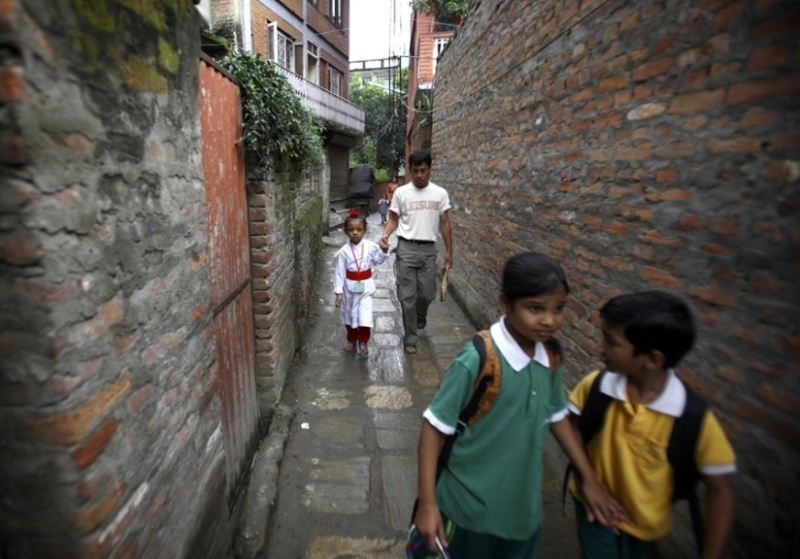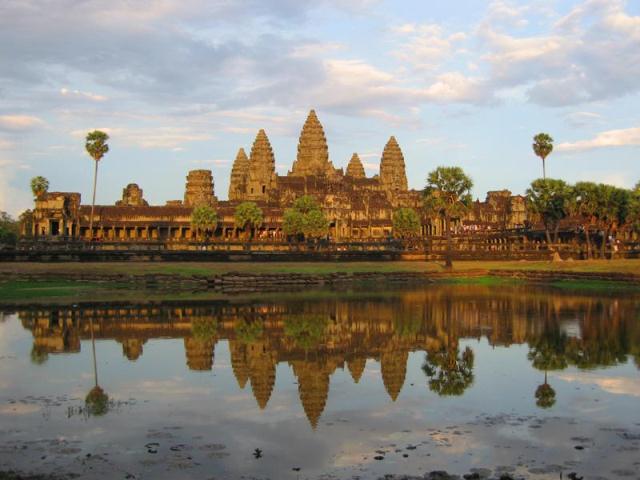How live gods children in Nepal
In the caste system of Nepal person can be born not only a warrior, or, for example, a Brahmin, but … god. If a child is kind of descendants of the Buddha meets certain criteria, it announced the reincarnation of the deity. But what is it like to be a god?
Calm grandeur, full of serene dignity that radiates this child, seated on an ornate throne in a chariot pulled by hundreds of Nepalese men, worthy of royalty or influential nobles. But he occupies in the social hierarchy has a higher position – God’s place. Sambegu originating from the Shakya caste, its origins from the founder of Buddhism, Siddhartha Gautama (Buddha Sakyamuni), was only five years old when the monastic council declared Nepal boy living god Ganesha (do not be surprised, in this country Buddhism and Hinduism is very bizarre and tightly interwoven) – personalized way deity of wisdom and prosperity. And the role has since played for simple Nepalese schoolchildren, goes far beyond the mere participation in traditional festivals – many child directly perceived as the embodiment of God on earth.
Outside celebrations and religious festivals Sambegu – this is the usual eight years old boy with a topknot on his head, wearing a dress made of gilded brocade and unusual life leading deity securely concealed most of the time outside the walls of the family home in Kathmandu. Once there, he has the right to exercise their inclinations typical kid: play hide and seek with his mother, the risk picture with crayons, play pranks and dance. When living Ganesha says with a smile that likes to eat porridge, biscuits, meat goats and buffalo, and chicken and eggs can not stand, and says he wants to become a doctor when he grows up, it’s hard to believe that you are dealing with this personalized deity for the vast majority of the population. Perhaps that is why the child Sambegu allowed only be in your room – otherwise the image of something divine, has come down from heaven subtly lost, lost status as God’s anointed by European monarchs.
To his role of living deity Sambegu refers to quite seriously adult – children’s playful spontaneity disappears as a genuine smile on his face, immediately after leaving the house. The only smile that can not afford the usual Nepali boy, and Ganesh in the flesh, dressed in festive attire wealth decorated jewelry and seated on a palanquin holiday surrounded by many thousands who believe in the divinity of his people on a large-scale festival like Durga Puja and Indra Yatra – is smiling benevolence of a supreme being. And this image Sambegu have to adhere to in public life not only during religious festivals – every day he takes bows with dignity from passers-by and even their own classmates, their blessing by touching his divine hand to his forehead. About the self-perception as a living god Ganesha himself does not think (if says, asking why he can not mischief in the classroom as other children, it is quickly suppressed and remains outside the walls of the family home), just with a calm majesty takes it.
And anyway, for the manifestation of his boyish nature that god is more features than the Nepalese goddess – Kumari. Appointed from ordinary girls Shakya caste, ethnic Newari, they are initially positioned as the bearer of the sacred purity and can not even touch your feet land on the street (where they are or in a palanquin, or just on the hands). Fold the divine powers of the first menstrual blood (or, say, a disease that causes bleeding). The hardest part has to Royal Kumari, who remains virtually captive Kumari Ghar Palace in Kathmandu for many years. Make a living goddess Taleju Bhavani illustrating desyatirukuyu, outside the palace can only for official religious ceremonies. Visiting girl named Matani Shakya – solely for the purpose of bringing offerings and worship, even my parents, and all the rest of the time she spends in the environment and workers some time coming teachers. But all this is hidden from prying eyes, the Royal Kumari in Nepal as a great hidden treasure, so for her everyday life will not get any trace.
But will learn how to live younger Kumari, say, Samit Bajracharya, performing in the world the role of the mother goddess Kali, violently destructive ignorance and light carrier (a kind of Hindu Athena). Unlike his royal colleagues, she lives in her parents’ house in Lalitpur, the second largest in the country. But this is hardly the only relief given to the girl. She did not go to school (studying for three hours a day with the incoming teacher) is not playing in the street with children (friends are allowed to visit her in the house, and then only in the resurrection). Only official religious ceremony endure her palanquin, and her bare feet believers are sacred offerings of flowers and money. All students wishing to successfully pass the session to influential businessmen who want to strengthen their position on the far horizon economically prosperous Nepal perceive decade Samiti as the goddess Kali in a child’s body.
But at school Samiti has highlighted the personal computer on which it plays, and paints, and her family, as well as family Sambegu receives allowance of 63 U.S. dollars per month, according to local standards, that is three times the median income in the country – a good tool. However, very little girl it seems to care little. Unlike prying eyes – even in informal, homely environment, it behaves much more subdued (perhaps just embarrassing) living god Ganesha: silently cuddle soft toy Mickey Mouse, which could be called a modern god of western pop culture. In general, they were right Strugatsky – it’s hard to be a god …







